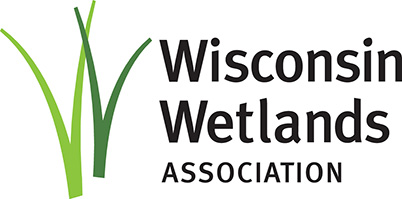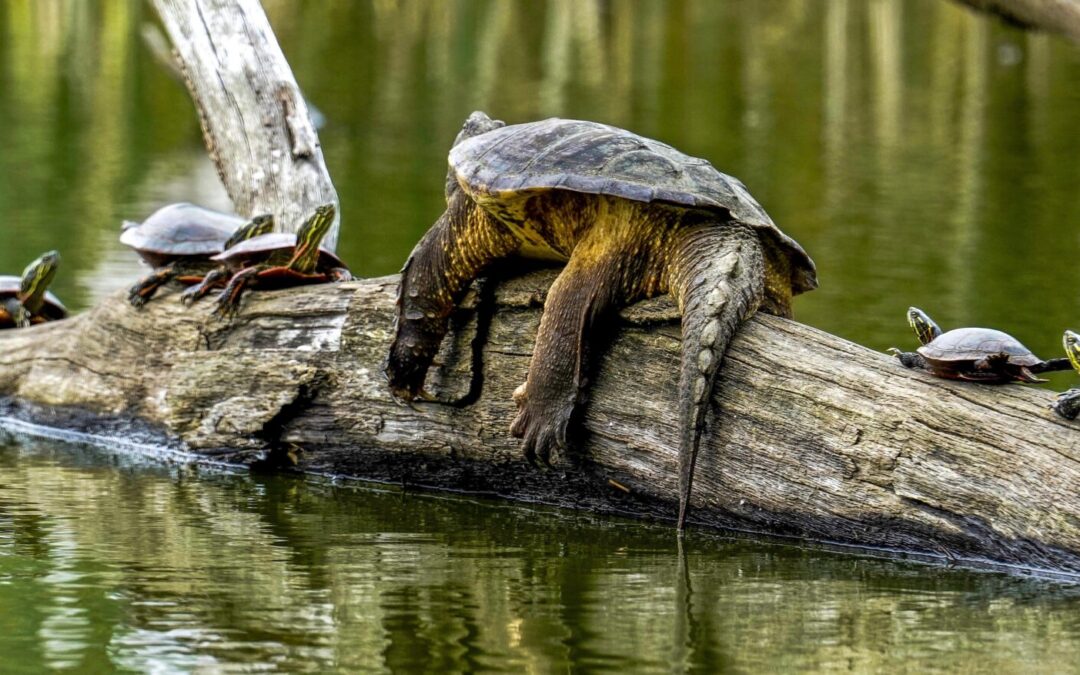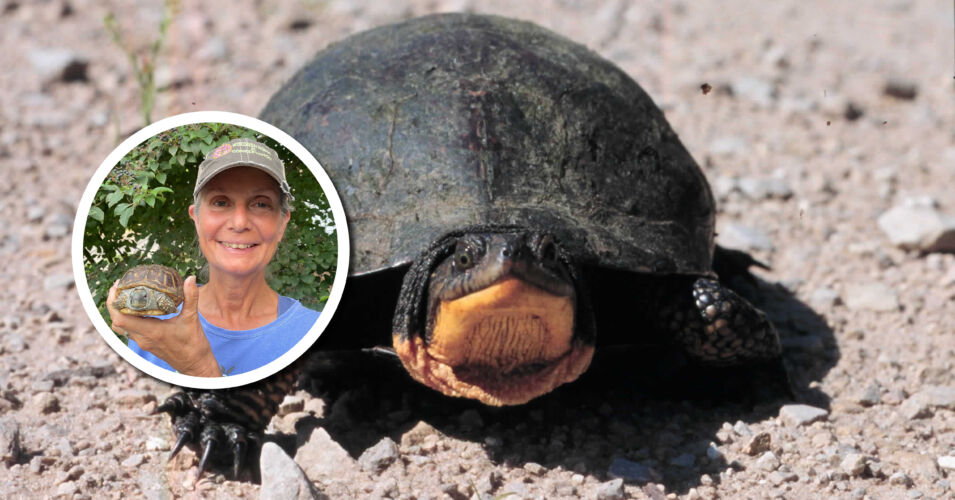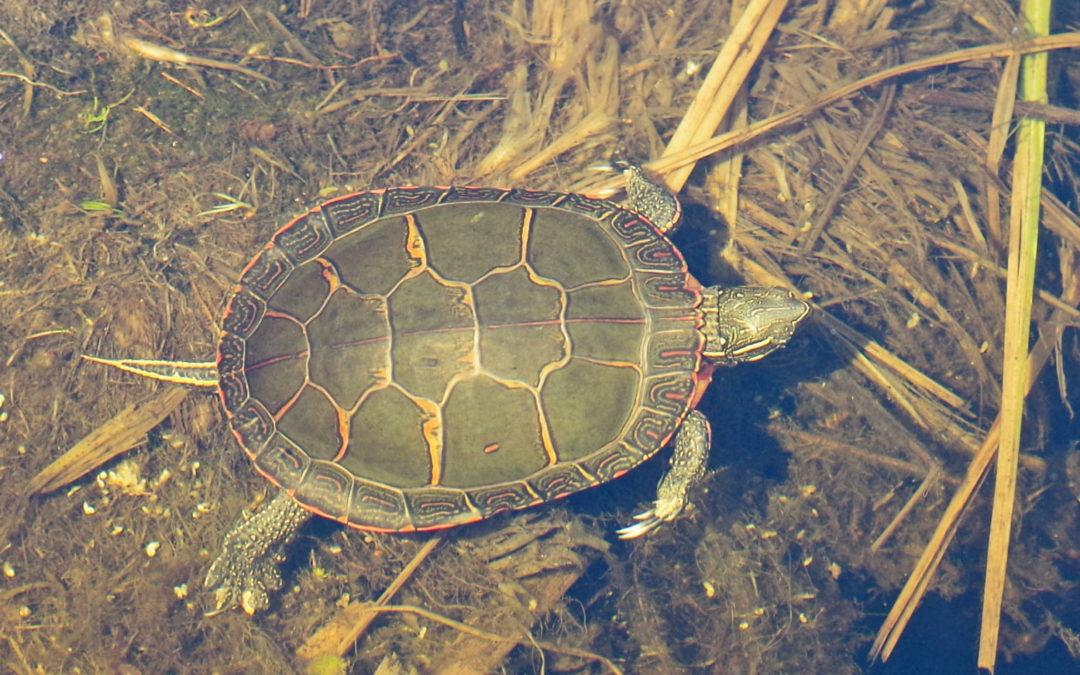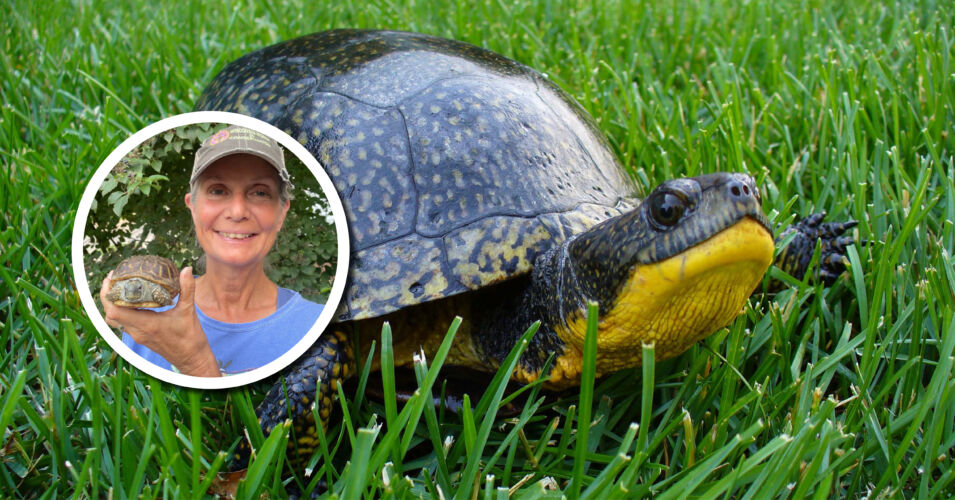by Rebecca Christoffel, Turtles for Tomorrow
Many turtles frequent wetlands, but most are secretive, so you’re lucky if you spy one! Turtles are good indicators of wetland quality because they are sensitive to environmental changes and can accumulate pollutants. Turtles—as eggs and hatchlings—are food for a host of animals including herons and raccoons. As predators, turtles feed on aquatic invertebrates, small fish, aquatic plants, and carrion. All turtles will come up on dry land to lay their eggs, but the amount of time spent and distance from water traveled differs among turtle species. In Wisconsin, late May to late June is turtle nesting season.
Wisconsin is home to 11 kinds of turtles. Here, we’ll discuss the four most closely associated with wetlands—the ones you are most likely to observe on your wetland forays! A couple of terms to be familiar with when reading about turtles include plastron (the bottom or “belly” of the turtle’s shell) and carapace (the top of the turtle’s shell).
The Painted Turtle (Chrysemys picta) is what most of us picture when we hear the word “turtle.” It is also the turtle you’re likely to spot basking in wetlands and other water bodies. I’ve observed up to 30 painted turtles basking on the same log, often jockeying among themselves for the best positions. Painted turtles are about 5–7 inches long. They have a smooth, mostly dark gray or dark green-brown carapace with a beautifully patterned plastron (pictured below right). Painted turtles have a network of yellow to reddish lines on their faces, tails, and limbs. Males are noticeably smaller than females and have long front claws used during courtship.
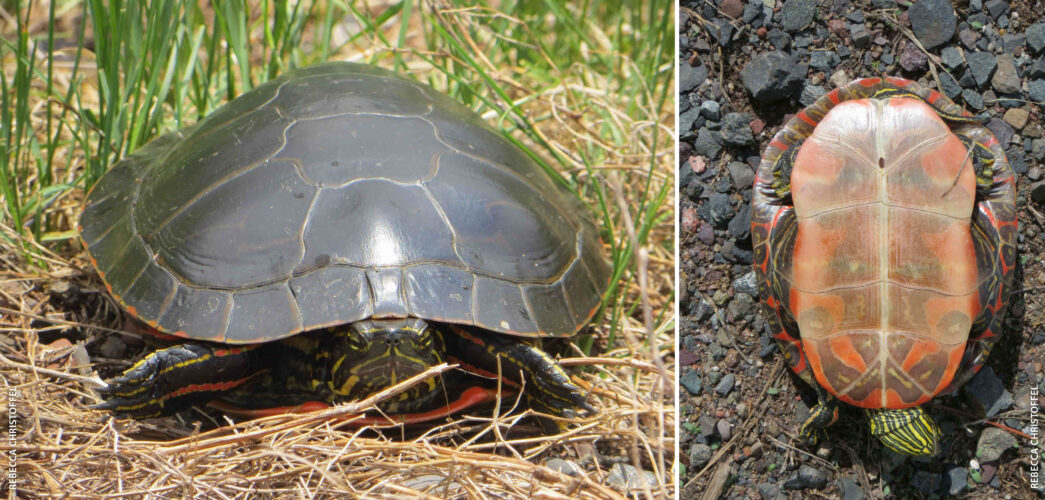
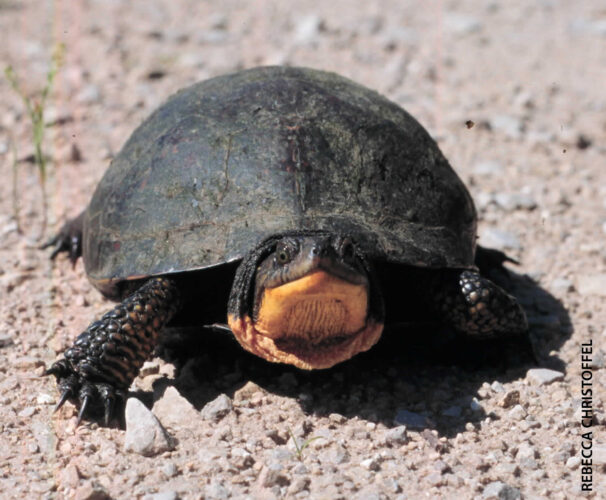
The Blanding’s Turtle (Emydoidea blandingii) is a true wetland denizen, living in complexes of wetlands where it can travel from one wetland to another to forage or bask. It has a shell length of 7–10 inches and can be readily recognized by its beautiful gold chin and throat—a feature unique among Wisconsin’s turtles. Its dark carapace with yellow or yellow-green spots is highly domed and smooth. Because Blanding’s turtles spend a lot of time both on land and in water, they are vulnerable to land-dwelling predators. Fortunately, they have a plastral hinge that allows them to close off the front of their shell from predators.
The Eastern Musk Turtle (Sternotherus odoratus) is Wisconsin’s smallest turtle, with a shell length of 3–5.5 inches. Adults have a dark brown or black smooth carapace that, when head and limbs are pulled
in, can resemble a rock. Its face has two yellow stripes running from the snout back to the neck (one above the eye and one below it), and they have fleshy projections, called barbels, on their chins. Their name comes from the musk glands located along their sides from which they can emit a strong-smelling odor that gives them the familiar name “stinkpot turtle.” Eastern musk turtles often inhabit oxbows and other quiet waters associated with rivers. They do not stray far from water but will climb bushes or trees to bask.
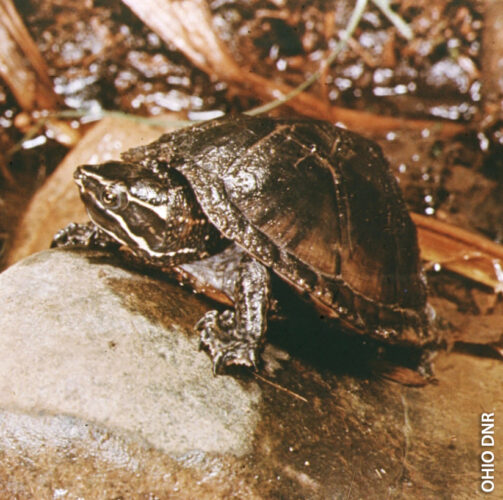
The Snapping Turtle (Chelydra serpentina) is the top predator in many small water bodies. This is our largest turtle in Wisconsin, reaching a shell length of up to 24 inches! You cannot mistake this turtle for any other in Wisconsin because it is the only adult turtle with a long tail. Projections on the tail give the animal a prehistoric look. Common snapping turtles are typically brown or black in color but can look quite green due to algae on their shells. The plastron, like that of the Eastern musk turtle, is very reduced, making these turtles vulnerable to predators when they are on dry land. Female snapping turtles are especially likely to be seen during turtle nesting season when they can travel significant distances to lay their eggs.
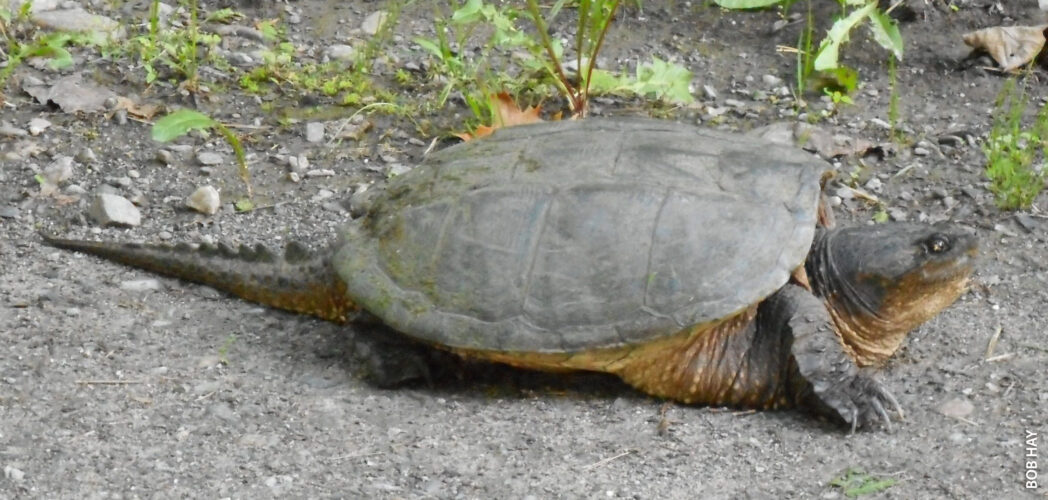
You can help Wisconsin’s turtles during nesting season! If you observe a turtle on the road, and it is safe to do so, you can move the turtle across the road in the direction in which it was headed. Here’s a guide on how to do so safely (for you and the animal!). Learn more about turtles at Turtles for Tomorrow or view Rebecca’s Wetland Coffee Break presentation, “Let’s talk turtles!“.
Related content
Wetland Coffee Break: Let’s talk turtles!
Wetland Coffee Break: Blanding’s turtle: A true wetland denizens
